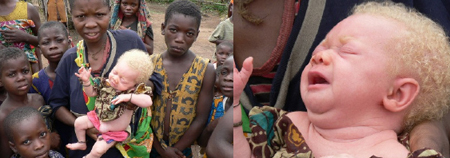Wednesday 16 November 2005
Have finally arrived in Kokolopori.
Couldn't quite believe it when we finally arrived at our final mooring point at dawn. The boat could not possibly go any further as the river finally narrowed to almost the dimensions of a doorway. There a softly sloping grassy bank waited for us, as well as some Kokolopori villagers, whose faces lit up to see Michael, Bienvenu, Charles and our hitchhikers. We quickly began unloading and soon more and more villagers appeared, smiling with hands outstretched, everybody wanting to shake hands, as if our presence to them was as otherworldly and welcome as that of the bonobos for me. A teenager, Keizei, took my bags and we headed off. Along the path we found villagers pouring down to get the paid work of carrying our goods.
The rainforest quickly closed in around us, the path barely discernable in the dense undergrowth, and it quickly lived up to its name when rain began to crash down. Various jungle smellsonions, honeysuckle, rotting fruit, potpourri fragrances. I kept up with the speedy lead group of porters as a bit of a macho thing, which was actually quite shallow, given they were half my age, height and weight and carrying twice my load. We passed through primary and secondary forest, fording streams and climbing trails that had become rivulets of muddy, puddly rainwater. We kept going and going and I realised I hadn't had any breakfast or water and looked forward to the feed that awaited me on arrival (also my stash of skittles in my pocket).
Then looked again at the porters, one boy grimacing under the weight of a suitcase on his head, and thought that they probably hadn't eaten either and probably no feast awaited them. I then recalled how the vast majority of the three million killed in the still recent war died from starvation and disease. Also thought of all the boatpeople and villagers I had passed who replied
to my waves by rubbing their tummies and making begging gestures. I called a halt and shared my water and Skittles (in the end, I got none!) then continued on. After a total 1.5 hr hike, I finally arrived at the village road. We had to pass through a number of villages and everyone waved and smiled in welcome, hordes of children spilled out to follow (squealing happily, "MONDELE! (Whitey)!" to which I replied with "MOINDO MOKE" (little blackey)). The houses were mudbrick with thatched roofs, scorched black due to no chimney. 19,000 people live here, children having babies, and the population pressure on bonobos must be intense.
Was taken to an area specifically prepared for visitors- A mudbrick compound of twelve rooms, two large shaded meeting areas in the middle, toilet, washing area and electric generator out the back. Surrounded by cassava groves (disease resistant, another BCI project) and forest. This was actually established with USD$3000 of seed funding from Australian GRASP (Great Ape Survival Project). GRASP perhaps naively expected the Aussie government to chip in $60k, but I have it on the very best authority that the Aussie government wouldn't care about a bonobo from Africa even if it arrived in a rickety boat without a proper visa in an Abu-Bakr Bashir t-shirt,
spouting Wahabbi doctrine.
We spent the rest of the day settling in to our comfortable but spartan huts, being welcomed by various worthies. In the afternoon, the Kokolopori Women's Association came dancing and singing through the gates- I think I could understand some of the Lingala lyrics- "we have joy, big joy, you have come, welcome". Many people here wear BCI t-shirts that read "Salisa bonono mpo na bonobo salisa yo"- “Help the bonobo so that the bonobo can help you”. They are very dedicated to bonobo protection and they also understand this brings much needed hard cash.
Hordes of children sneak into the compound to stare at the foreigners. Occasionally an elder shoos them away with a stick and they leave with maximum impudence, returning as soon as he turns his back.

I didn’t do it!---albino baby (Photos- Martin Bendeler)
Next page










